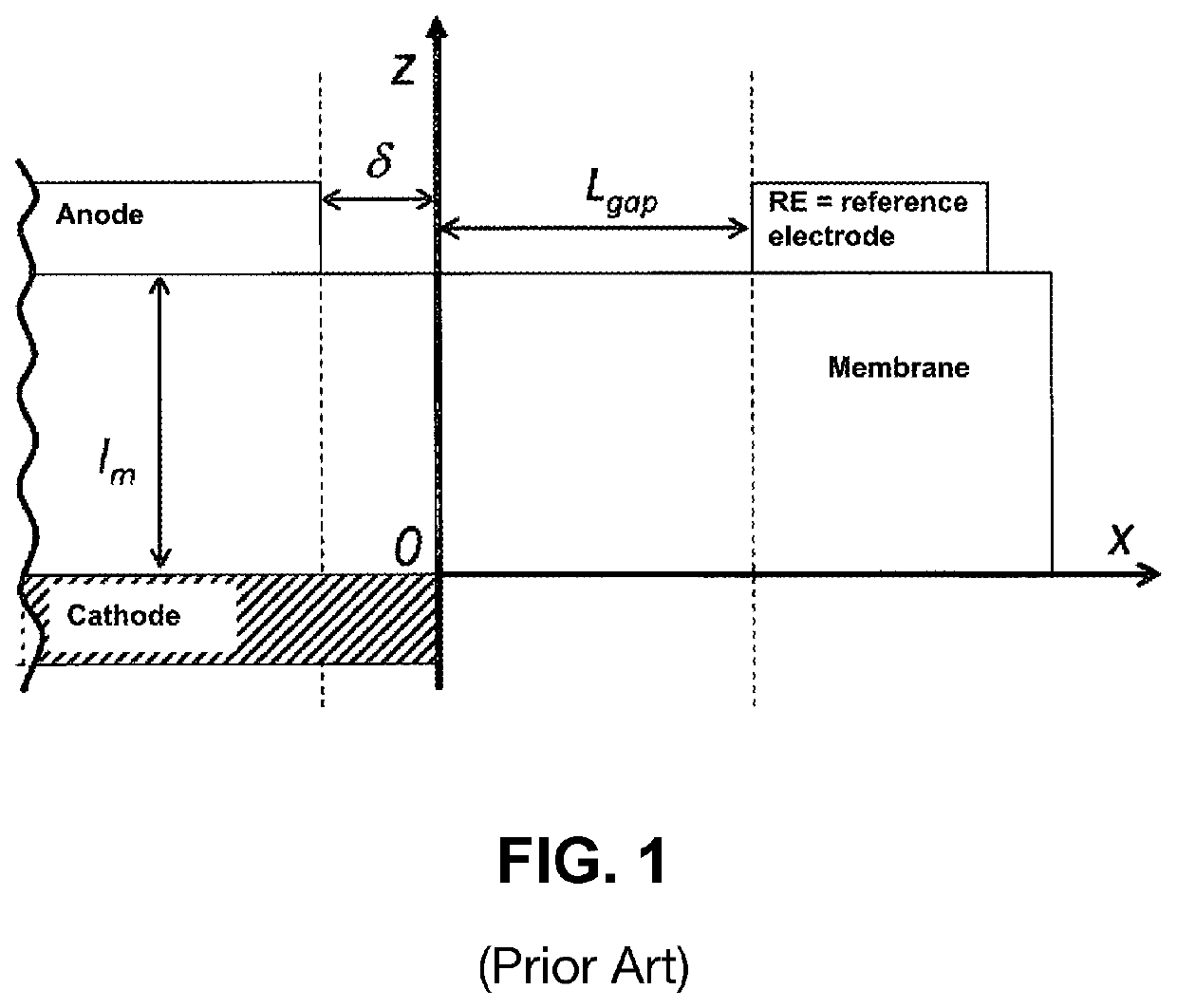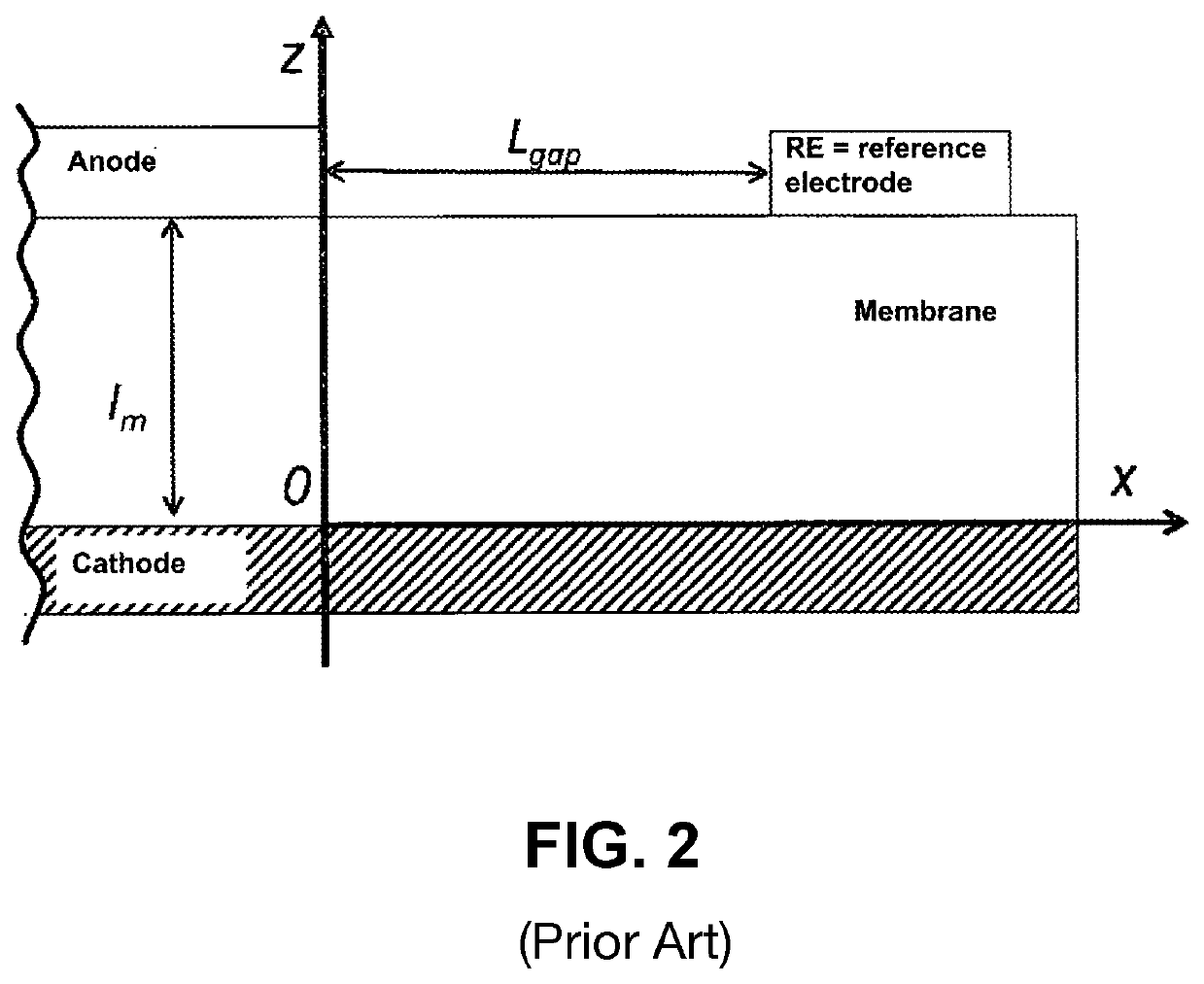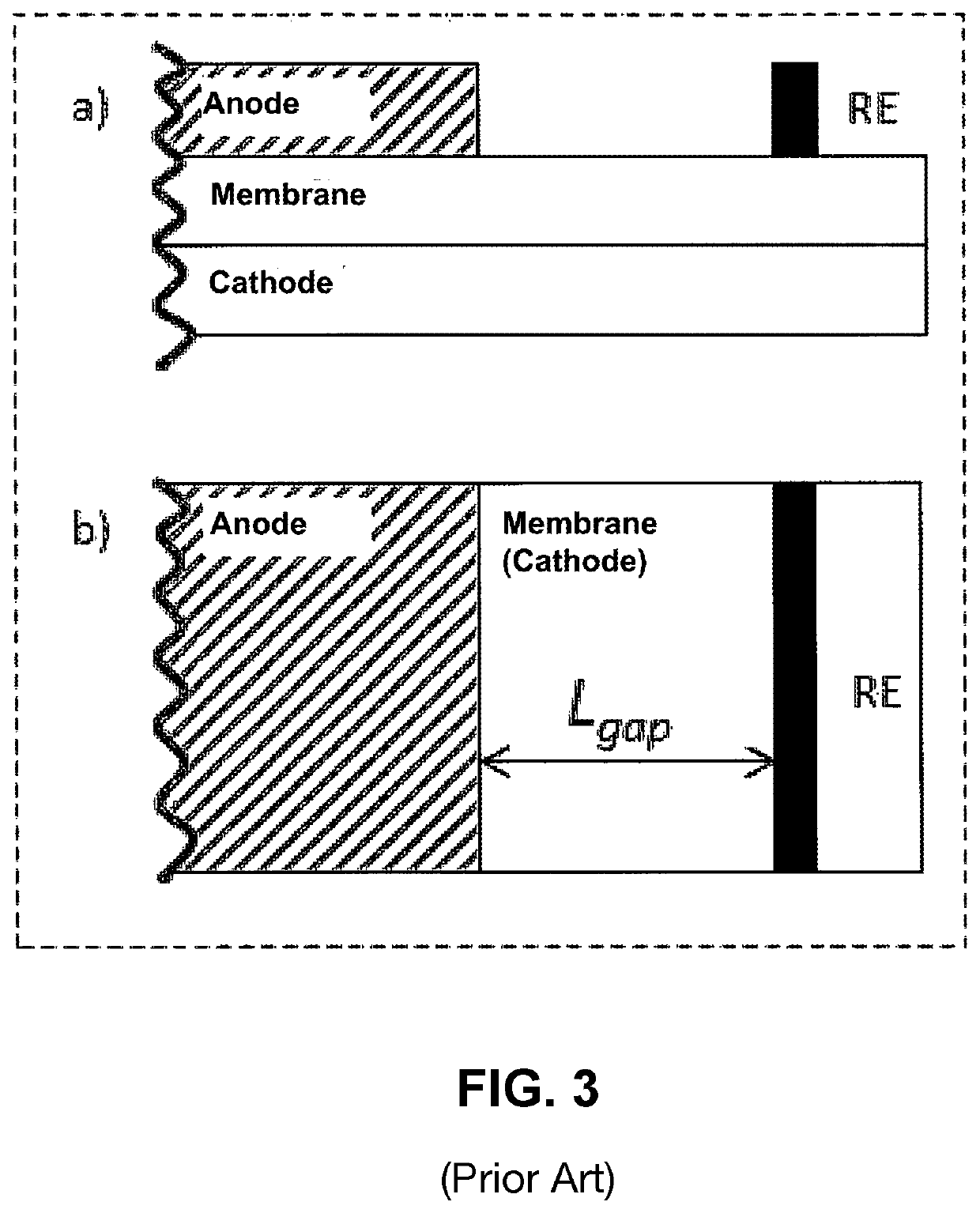Fuel Cell Arrangement
a fuel cell and arrangement technology, applied in the direction of electrolysis components, electrolysis processes, electrochemical generators, etc., can solve the problems of inability to accurately position the reference electrode, the exact position of the reference electrode on the z-axis is not known, and the unsuitable positioning of the reference electrode is not readily apparent, etc., to achieve the effect of sufficient accuracy
- Summary
- Abstract
- Description
- Claims
- Application Information
AI Technical Summary
Benefits of technology
Problems solved by technology
Method used
Image
Examples
Embodiment Construction
[0044]Hereafter, the fuel cell model and fundamental equations will be described, which serve as the basis for the numerical calculation for the fuel cell design according to the invention.
[0045]The following symbols are used:[0046]˜ denotes non-dimensional variables[0047]b Tafel slope of the half cell for the anodic or cathodic reaction (V)[0048]Eeq equilibrium potential of a half cell (V)[0049]F Faraday constant[0050]J average current density in the working area (A cm−2)[0051]ja local proton current density on the anode side (A cm−2)[0052]jc local proton current density on the cathode side (A cm−2)[0053]jhy hydrogen exchange current density (A cm−2)[0054]jhy0 hydrogen exchange current density in the working area (A cm−2)[0055]jox oxygen exchange current density (A cm−2)[0056]jox0 oxygen exchange current density in the working area (A cm−2)[0057]Lgap minimum distance between the edge of the counter electrode and the edge of the reference electrode[0058]Ll,x distance between the str...
PUM
| Property | Measurement | Unit |
|---|---|---|
| radius Ra | aaaaa | aaaaa |
| radius Ra | aaaaa | aaaaa |
| local radius Ra | aaaaa | aaaaa |
Abstract
Description
Claims
Application Information
 Login to View More
Login to View More - R&D
- Intellectual Property
- Life Sciences
- Materials
- Tech Scout
- Unparalleled Data Quality
- Higher Quality Content
- 60% Fewer Hallucinations
Browse by: Latest US Patents, China's latest patents, Technical Efficacy Thesaurus, Application Domain, Technology Topic, Popular Technical Reports.
© 2025 PatSnap. All rights reserved.Legal|Privacy policy|Modern Slavery Act Transparency Statement|Sitemap|About US| Contact US: help@patsnap.com



